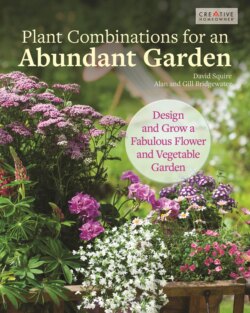Читать книгу Plant Combinations for an Abundant Garden - A. & G. Bridgewater - Страница 27
На сайте Литреса книга снята с продажи.
BORDERS
ОглавлениеIn garden design, a border can be regarded both as an area for planting and as a three-dimensional element. Most modern gardens consist of four elements – lawns, paving, borders and water – so borders figure very highly in the scheme of things. When it comes to designing a border, there are three aspects to consider: the shape as seen on the ground, the character of the structure (the edgings, retaining wall and so on) and the type of planting it will support.
How do I design a border?
BORDER DESIGNS IN PLAN VIEW
Informal edge-strip borders
Formal, geometrical borders
Informal island border in lawn
Informal peninsular border
There are only six basic types of border.
• The edge-strip border that uses the boundary fence as a backdrop.
• The geometrical border that relates to some sort of formal design.
• The island border that is set within a sea of lawns.
• The peninsular border that runs out from a boundary fence.
• The border that runs hard up against the wall of the house.
• The border that relates to some sort of functional scheme – it looks to the sun, is just the right width away from the wall for the wheelbarrow, or whatever it might be.
When you come to design a border, you have to decide how you want it to figure in the scheme of things. For example, do you just want to break up an area of lawn, put distance between you and your neighbors, or create the illusion that your garden is, for example, wider or shorter?
PLANTING SCHEMES
A mixed border in summer is usually packed with color, texture and form. This example includes climbers on tripods, shrubs and herbaceous perennials in a variety of flower colors.
Mixed borders have an exciting, dynamic nature – they are invariably colorful and vibrant.
EDGINGS
Edgings function on two levels: they physically prevent the earth of the border running over the path or lawn next to it, and they are a design feature in their own right – such as a wall, a row of tiles or a railroad tie.
Raised borders
Ready-made rustic log rolls are an easy option.
A double- thickness wall is a good choice for a small garden.
Red brick is a good traditional choice.
MULCH
A mulch has many functions. For example, while a mulch such as a layer of manure or tree bark prevents the soil from drying out, holds back the growth of weeds and rots down to enrich the soil, a mulch such as pea gravel or crushed rock holds in moisture, holds back the weeds and functions as a design feature in its own right.
